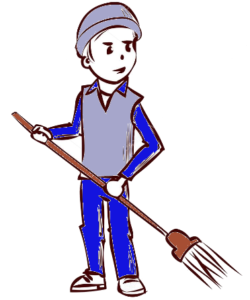“Get It On” is a song by the English rock band T. Rex, featured on their 1971 album Electric Warrior. Written by frontman Marc Bolan, “Get It On” was the second chart-topper for T. Rex on the UK Singles Chart. In the United States, it was re titled “Bang a Gong (Get It On)” to avoid confusion with a song of the same name by the group Chase.
Following the success of T. Rex’s single, “Hot Love”, the band went on a United States tour. While in New York in March 1971, Bolan asked drummer Bill Legend to help him brainstorm drum patterns for a song idea that would later become “Get It On”. Bolan claimed to have written the song out of his desire to record Chuck Berry’s “Little Queenie”, and said that the riff was taken from the Berry tune. In fact, a slightly edited line (And meanwhile, I’m still thinking) from “Little Queenie” is delivered during the fade of “Get It On”. According to producer Tony Visconti, this line was an unscripted ad-lib by Bolan during recording. This was the song that virtually ended the once-solid friendship between Bolan and John Peel, after Peel made clear his lack of enthusiasm for it on air after playing his advance white label copy. Bolan and Peel spoke only once more before the former’s death in 1977.
The track was recorded at Trident Studios, London, and the piano on the record was performed by either Rick Wakeman or Blue Weaver. Mark Paytress notes that both pianists may have played separate parts on the song, with Wakeman contributing only the piano glissandos that feature several times throughout the song. Wakeman, who was desperate for work at the time to pay his rent, had bumped into Bolan in Oxford Street, who offered him the session. Wakeman pointed out to Tony Visconti that the record did not actually need a piano player. Visconti suggested that he could add a gliss. Wakeman said that Visconti could do that, to which Bolan replied, “You want your rent, don’t you?” Wakeman did, and earned £9 for his efforts. Saxophones were played by Ian McDonald of King Crimson. Producer Visconti later recalled: “He played all the saxes, one baritone and two altos. I kept the baritone separate but bounced the altos to one track. I bounced the backup vocals to two tracks, making an interesting stereo image.” Mark Volman and Howard Kaylan (formerly The Turtles) provided back up vocals. During a December 1971 Top of the Pops performance, Elton John mimed playing a piano on the song.
It spent four weeks at the top in the UK, starting 24 July 1971 (“Hot Love” was number one for six weeks from March to May), and it was the group’s biggest hit overall, with Bolan claiming that it sold a million. It peaked on the US Billboard Hot 100 chart at number 10 and at number 12 in the Cash Box Top 100 in March 1972, becoming the band’s only major US hit. The song reached No. 12 in Canada in March 1972.
Get It On” was covered by the Power Station in 1985. Their version – referred to as “Get It On (Bang a Gong)” in the US – was released as the second single from their debut album. The track was a strong hit on the US Billboard Hot 100 chart, where the single peaked at number nine (one place higher than the original) in the summer of 1985. Meanwhile, in the UK, the song reached number 22 on the UK Singles Chart. The band was originally going have a different guest vocalist on each song on their album and had brought in Robert Palmer first to sing a different song. When Palmer heard that the band had recorded a demo of “Get It On”, he asked to try out vocals for it also. Afterwards, the band then decided to record the entire album with Palmer. Model Caroline Cossey, who had featured in their previous video for “Some Like It Hot”, appeared again, alongside American dancer/singer-songwriter Sara Carlson.
